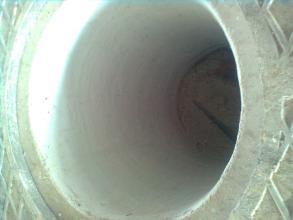Cause Analysis of Damaged Furnace Lining
What are the reasons for the damage to the furnace lining? Today, Luoyang Quantong Kiln Industry Co., Ltd. will understand with you:
1, molten iron penetration damage
The molten iron penetrates into the carbon brick along the pores of the carbon brick, and the infiltrated molten iron dissolves the binder in the carbon brick, and then dissolves the carbon particles in the carbon brick, destroys the compactness of the carbon brick, reduces the strength of the carbon brick, and penetrates into the carbon brick. The molten iron in the brick reacts with the carbon brick to form a brittle substance such as FexC. After the formation of this substance, the volume expands in the pores of the carbon brick, making the pores of the carbon brick embrittled and cracked, forming on the hot surface of the carbon brick. brittle layer.
2, the circulation of molten iron in the furnace
The circulation of molten iron aggravates the erosion and erosion of the brittle layer on the surface of the carbon brick by molten iron, which makes the carbon brick thinner. The bricks are strongly eroded by the flowing slag iron, thereby reducing the life of the furnace lining.
3. Corrosion of carbon bricks by alkali metals and zinc
Thermodynamic calculations show that when the heat transfer performance of the carbon brick is poor, there is a large temperature difference between the hot surface and the cold surface, and the thermal stress of the temperature difference inside the carbon brick is large, which induces cracks in the carbon brick, and pure alkali metal vapor passes through the carbon brick. The microcracks of the carbon bricks continuously flow and spread to the low temperature area of the carbon brick, and the microcracks are the cause of the ring cracks. If the alkali metal vapor enters the microcracks of the carbon brick, when the temperature reaches 800 degrees Celsius, the alkali metal vapor will be in the microcracks. liquefaction, and then react with the silica-alumina ash of carbon bricks, causing the volume of ash to expand by 30%, aggravating the expansion of microcracks in carbon bricks and forming cracks. Activated carbon deposits are formed in the cracks. This reaction continues. The carbon brick cracks are continuously expanded and squeezed, the carbon brick cracks continue to expand, and the carbon bricks are split to form ring cracks. Improving the thermal conductivity of carbon bricks is an effective means to prevent ring cracks. .

Related News
- Introduction of construction method of ramming material in intermediate frequency furnace
- How to choose the material of furnace lining
- The difference between rammer and castable
- Application direction of intermediate frequency furnace refining
- Introduction to the construction method of dry ramming material
- Do you know the production process and control points of breathable bricks?
- The application of argon blowing technology at the bottom of the intermediate frequency furnace
- Method for prolonging service life of intermediate frequency furnace lining
- In addition to diffused breathable bricks, there are those types of breathable bricks
- What are the advantages of coil cement
- Influence of Furnace Lining Material on Pre-furnace Temperature of Copper Alloy
- Brief introduction of furnace lining baking process
- What are the points of a good furnace lining
- Introduction of construction technology of full fiber furnace lining in furnace lining material
- Scope of application of ramming material for intermediate frequency furnace
- The application of intermediate frequency furnace ramming material in stainless steel furnace
- Intermediate frequency furnace charge manufacturers: how to protect the intermediate frequency furnace lining
- Introduction to the requirements of induction furnace lining materials
- What should be paid attention to when the ramming material is knotted
- The performance advantages of breathable bricks


